UBS Investment Bank supports its over 500 clients with advice, financial solutions, and access to the world’s capital markets in order to ensure customer satisfaction. Operating through UBS Realty Investors LLC., the firm manages $32.4 billion of total assets on behalf of in core, core-plus, value-added, and participating mortgage strategies. UBS Realty Investors launched its first real estate fund over 40 years ago and today has 200 professionals working in three primary offices in the US, with its headquarters in Hartford, CT.
UBS Realty Investors is looking for an organized student with a strong ability to professionally communicate in order to fill the position of Research & Strategy Summer Analyst. This intern will work closely with the Research & Strategy team based in Hartford, CT. Some projects this intern would work on are visual analytics including modeling using statistical programs (i.e., R-Project) and data visualization (i.e., Tableau).
In order to apply candidates must be enrolled in either a bachelor’s or graduate degree program with an expected graduation date after August 2018. Candidates must have basic knowledge of data analytics and visualization, and proficient experience with Microsoft-based products, particularly Word and Excel. Proficiency in Tableau and R-Project would be highly valued, but not required, as well as an understanding of pivot tables, vlookups, and keyboard shortcuts. Students with a passion for data analytics and business intelligence are strongly encouraged to apply.
All candidates must apply on or before February 2, 2017, by sending an email with a resume and cover letter
to SH-Non-Employee@ubs.com, make the subject line UBS Hartford research internship.
If you have questions, send an email with subject line UBS Hartford research internship to Vasilios
Diakogeorgiou at Vasilios.Diakogeorgiou@ubs.com or to Jenna Castrovillari at jenna.castrovillari@ubs.com.
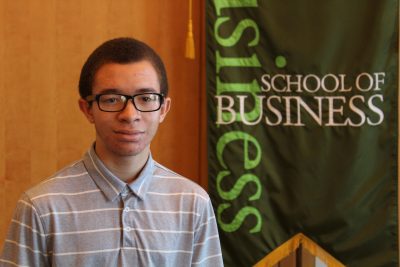
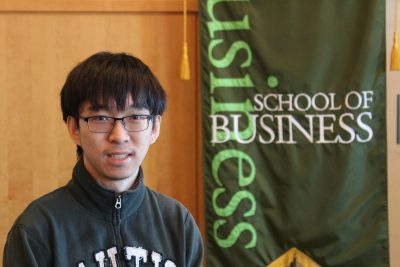
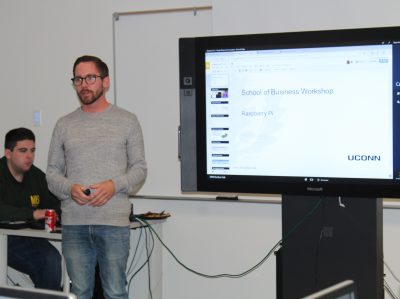 On Friday, December 1, the Operations and Information Management (OPIM) Department held it’s last workshop of the semester on Microcontroller Applications. Microcontrollers are small circuit boards that have the computer power to perform different tasks. There are three common brands of microcontrollers, including Raspberry Pi, Arduinos, and Intel Edisons. Although the OPIM Department has all three types, this workshop used Raspberry Pis to enhance the hands on experience of the activities. So far there have a number of versions of Raspberry Pis manufactured and each version has gotten better over time adding additional hardware and features including wireless and Bluetooth technology. Microcontrollers are so open ended, anyone can benefit from their use.
On Friday, December 1, the Operations and Information Management (OPIM) Department held it’s last workshop of the semester on Microcontroller Applications. Microcontrollers are small circuit boards that have the computer power to perform different tasks. There are three common brands of microcontrollers, including Raspberry Pi, Arduinos, and Intel Edisons. Although the OPIM Department has all three types, this workshop used Raspberry Pis to enhance the hands on experience of the activities. So far there have a number of versions of Raspberry Pis manufactured and each version has gotten better over time adding additional hardware and features including wireless and Bluetooth technology. Microcontrollers are so open ended, anyone can benefit from their use.
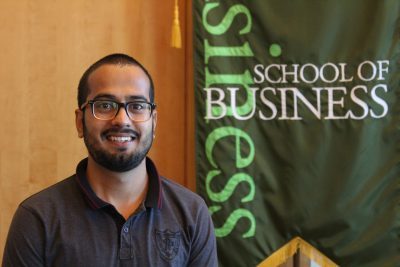
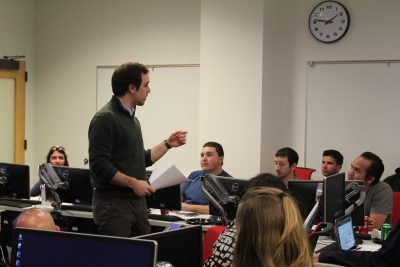 Blockchain is a peer to peer distributed database that records transactions. “Everyone can have a copy of the ledger, the list of all records, and see every transaction. Because everyone has this ability, everyone can check and make sure that the lists are correct,” said Fitzgerald. Each group of transactions gets added to the ledger as a different block, and it becomes a chain because each block builds upon the data from the first block. Although the concept of Blockchain is relatively new, it is not a new technology. Instead, it is a system that uses existing technologies, that wouldn’t normally be combined, in new ways. “It’s sort of a greater than the sum of its parts product” using elements of cryptography, accounting, and math to create the database.
Blockchain is a peer to peer distributed database that records transactions. “Everyone can have a copy of the ledger, the list of all records, and see every transaction. Because everyone has this ability, everyone can check and make sure that the lists are correct,” said Fitzgerald. Each group of transactions gets added to the ledger as a different block, and it becomes a chain because each block builds upon the data from the first block. Although the concept of Blockchain is relatively new, it is not a new technology. Instead, it is a system that uses existing technologies, that wouldn’t normally be combined, in new ways. “It’s sort of a greater than the sum of its parts product” using elements of cryptography, accounting, and math to create the database.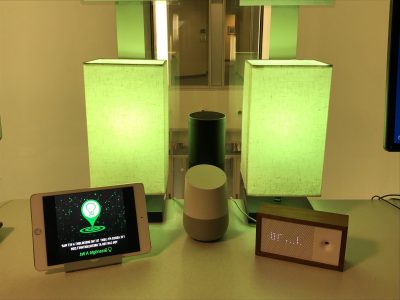 On Friday November 10th, LIFX, a company that creates smart lightbulbs, decided to participate in a movement that began in 2013, Greenlight A Vet. The company states that changing your lights to green is an easy way to establish visual support for America’s veterans by changing lights to green. The color green represents hope and positive well-being and green light is to show forward movement or advancement towards the cause. Once a participant change their lights to a particular color green they will appear on the LIFX greenlight map. The green light map shows where people in the United States have been using the app to change their lights to green. To raise awareness of the campaign, participants are encouraged to share their green light on the map and post on social media. A a user is encouraged to share a photo of the green light using the hashtag #greenlightavet. If not interested in sharing a photo, an alternative way to raise awareness is by applying the Greenlight A Vet filter onto a profile picture on Facebook.
On Friday November 10th, LIFX, a company that creates smart lightbulbs, decided to participate in a movement that began in 2013, Greenlight A Vet. The company states that changing your lights to green is an easy way to establish visual support for America’s veterans by changing lights to green. The color green represents hope and positive well-being and green light is to show forward movement or advancement towards the cause. Once a participant change their lights to a particular color green they will appear on the LIFX greenlight map. The green light map shows where people in the United States have been using the app to change their lights to green. To raise awareness of the campaign, participants are encouraged to share their green light on the map and post on social media. A a user is encouraged to share a photo of the green light using the hashtag #greenlightavet. If not interested in sharing a photo, an alternative way to raise awareness is by applying the Greenlight A Vet filter onto a profile picture on Facebook.
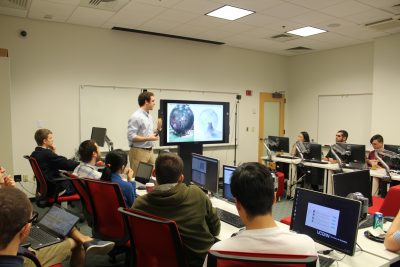 Virtual reality can be run through many different platforms but Professor Fitzgerald focused on the Unity software for the workshop. “The Unity engine is just something that has done all the hard work for you already. So the physics and the calculation of the computer code has all been done for you.” Giving students a background on the Unity engine will help them build confidence to be able to create their own virtual reality experiences.
Virtual reality can be run through many different platforms but Professor Fitzgerald focused on the Unity software for the workshop. “The Unity engine is just something that has done all the hard work for you already. So the physics and the calculation of the computer code has all been done for you.” Giving students a background on the Unity engine will help them build confidence to be able to create their own virtual reality experiences.  Although virtual reality is relatively new, its real world applications are endless. So far, it has been used to train doctors and surgeons, to treat people with anxiety and fears, to improve athletics, to train military personnel, to assist in construction and home design, and even to help paralyzed people walk again. In one instance during the workshop virtual reality was used along with a brain interface machine to restore people’s ability to walk when they were paralyzed. Because of virtual reality, paraplegics were able to have their bodies recreate cells that wouldn’t have otherwise been created in order to get themselves to walk again.
Although virtual reality is relatively new, its real world applications are endless. So far, it has been used to train doctors and surgeons, to treat people with anxiety and fears, to improve athletics, to train military personnel, to assist in construction and home design, and even to help paralyzed people walk again. In one instance during the workshop virtual reality was used along with a brain interface machine to restore people’s ability to walk when they were paralyzed. Because of virtual reality, paraplegics were able to have their bodies recreate cells that wouldn’t have otherwise been created in order to get themselves to walk again.